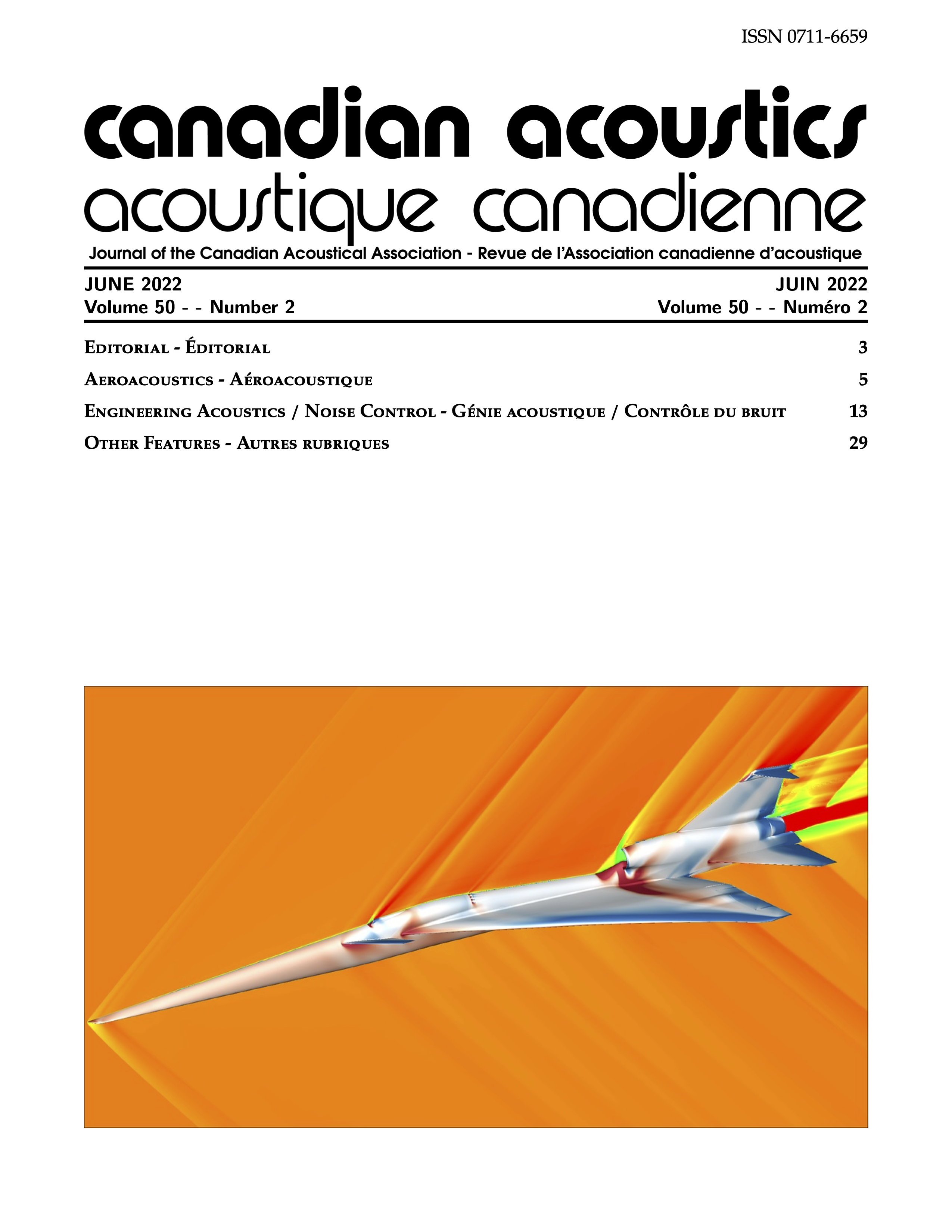Sensitivity Study of Sonic Boom Ground Signature Using Different Axial Distance Step Sizes for Evaluating Near-Field Overpressure
Keywords:
Sonic boom, supersonic aircraft, sensitivity analysisAbstract
To study the feasibility of supersonic commercial airliners, it is essential to better understand the impact of sonic boom caused by the aircraft. For simplicity, a general supersonic airliner concept by Smith et al. was used to conduct this analysis. Using an aircraft model created using Autodesk’s Fusion 360 CAD program, the effects of the aircraft volume and lift in the near- field of the aircraft was determined using a custom MATLAB script developed in-house. The near-field overpressure was then propagated using NASA’s PC Boom program to determine the ground signature of the airliner. Furthermore, a sensitivity analysis for the geometric and lift properties was conducted. It was determined that an axial step-size of 1.2 m yields the best results for creating the full ground signature propagated by PC Boom and using this step size also has better computation times compared to smaller step-sizes. It was also observed that smaller step sizes for analysis caused noisier data to be produced which may have limited how PC Boom propagates the near-field results as smaller step-sizes have more incomplete ground signatures. Finally, it was determined that a sufficiently large step-size causes the signature propagated by PC Boom to form a different shape compared to step-sizes less than 1.2 m, which should not be considered.
Additional Files
Published
How to Cite
Issue
Section
License
Author Licensing Addendum
This Licensing Addendum ("Addendum") is entered into between the undersigned Author(s) and Canadian Acoustics journal published by the Canadian Acoustical Association (hereinafter referred to as the "Publisher"). The Author(s) and the Publisher agree as follows:
-
Retained Rights: The Author(s) retain(s) the following rights:
- The right to reproduce, distribute, and publicly display the Work on the Author's personal website or the website of the Author's institution.
- The right to use the Work in the Author's teaching activities and presentations.
- The right to include the Work in a compilation for the Author's personal use, not for sale.
-
Grant of License: The Author(s) grant(s) to the Publisher a worldwide exclusive license to publish, reproduce, distribute, and display the Work in Canadian Acoustics and any other formats and media deemed appropriate by the Publisher.
-
Attribution: The Publisher agrees to include proper attribution to the Author(s) in all publications and reproductions of the Work.
-
No Conflict: This Addendum is intended to be in harmony with, and not in conflict with, the terms and conditions of the original agreement entered into between the Author(s) and the Publisher.
-
Copyright Clause: Copyright on articles is held by the Author(s). The corresponding Author has the right to grant on behalf of all Authors and does grant on behalf of all Authors, a worldwide exclusive license to the Publisher and its licensees in perpetuity, in all forms, formats, and media (whether known now or created in the future), including but not limited to the rights to publish, reproduce, distribute, display, store, translate, create adaptations, reprints, include within collections, and create summaries, extracts, and/or abstracts of the Contribution.


